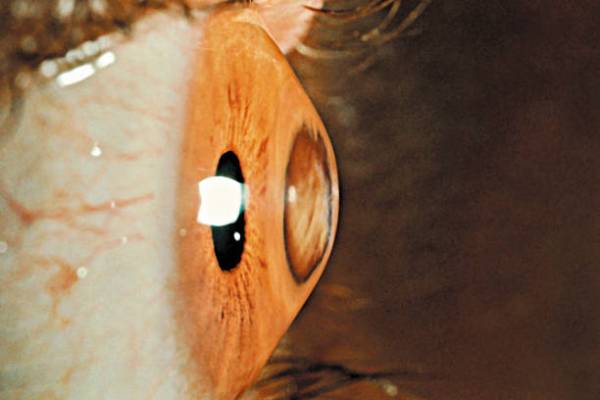Keratoconus affects the cornea’s shape, causing vision problems that worsen over time. This progressive condition creates a cone-like bulge in the eye’s front surface. Cross-linking offers hope for patients seeking to halt this deterioration and preserve their sight.
Residents seeking Reseda keratoconus treatment options often discover cross-linking as their primary solution. This procedure represents a significant advancement in managing corneal irregularities. Many patients find relief through this targeted approach that addresses the root cause of their vision decline.
Understanding Cross-Linking Technology
- Collagen Strengthening Process: Cross-linking works by strengthening the cornea’s natural collagen fibres through controlled chemical bonding. The procedure uses riboflavin drops and ultraviolet light to create new bonds between collagen molecules. This process stabilises the cornea and prevents further bulging or distortion.
- Treatment Duration and Technique: The actual cross-linking procedure typically takes about ninety minutes to complete in a clinical setting. Patients receive numbing drops before the treatment begins, ensuring comfort throughout the process. The riboflavin solution penetrates the corneal tissue for approximately thirty minutes before UV activation.
Determining Patient Candidacy
- Age and Progression Factors: Ideal candidates are typically under thirty-five years old with documented keratoconus progression within recent months. Younger patients often respond better to treatment due to their corneas’ natural healing capacity. Progressive cases require immediate intervention to prevent further vision deterioration.
- Corneal Thickness Requirements: Patients need adequate corneal thickness of at least 400 micrometers to safely undergo cross-linking treatment. Thinner corneas may not withstand the procedure without risking permanent damage or complications. Advanced diagnostic equipment measures these specifications precisely before treatment approval.
- Visual Stability Considerations: Candidates should demonstrate unstable vision patterns or worsening topography readings over consecutive examinations. Stable keratoconus cases may not benefit significantly from cross-linking intervention at that time. Regular monitoring helps determine the optimal treatment timing for each individual case.
Recovery Process and Timeline
- Immediate Post-Treatment Care: The first week after cross-linking involves careful wound healing as the corneal surface regenerates completely. Patients experience light sensitivity and mild discomfort during this initial recovery phase. Protective contact lenses help shield the healing cornea from external irritants.
- Pain Management Expectations: Most patients report manageable discomfort similar to having something in their eye for several days. Over-the-counter pain relief typically provides adequate comfort during the healing process. The discomfort gradually decreases as the corneal epithelium regenerates over five to seven days.
Long-Term Treatment Outcomes
- Vision Stabilisation Results: Studies show that cross-linking successfully halts keratoconus progression in over ninety percent of treated patients. Many individuals experience slight vision improvements within six to twelve months after treatment. The procedure’s primary goal focuses on preventing further deterioration rather than improving existing vision problems.
- Potential Visual Improvements: Some patients notice modest improvements in their prescription requirements and overall visual clarity months after treatment. These changes occur as the cornea settles into its new, more stable configuration. Visual improvements vary significantly between individuals based on their initial condition severity.
- Monitoring Requirements: Regular follow-up appointments track the cornea’s response to treatment and ensure proper healing progression occurs. Patients typically require examinations at one week, one month, three months, and annually thereafter. These appointments help detect any unusual healing patterns or complications early.
- Complete corneal healing occurs within one to two weeks of the procedure.
- Vision stability becomes apparent within three to six months post-treatment.
- Long-term results show sustained corneal stability in most treated cases.
- Annual monitoring helps detect any rare progression despite successful treatment.
Treatment Considerations
- Alternative Options Assessment: Patients should understand that cross-linking represents the only proven method for halting keratoconus progression currently available. Contact lenses and glasses only correct vision temporarily without addressing the underlying corneal weakening. Corneal transplants become necessary only when other treatments fail to provide adequate vision correction.
- Cost and Insurance Coverage: Many insurance plans now recognise cross-linking as a medically necessary treatment for progressive keratoconus cases. Patients should verify their coverage details before scheduling treatment to understand potential out-of-pocket expenses. Early intervention often proves more cost-effective than waiting for advanced disease stages.
Keratoconus cross-linking offers patients a proven method to halt corneal deterioration and preserve their vision for years ahead. This procedure provides hope for those facing progressive vision loss due to corneal irregularities. Early detection and prompt treatment yield the best outcomes for maintaining visual function and quality of life. Schedule a comprehensive evaluation today to determine if cross-linking treatment could benefit your specific condition and vision goals.
Featured Image Source: https://media.gettyimages.com/id/151064161/photo/keratoconus.jpg?s=612×612&w=0&k=20&c=0P_pftakSZQ3zLuWablGf566n5gYRJRc7DE98ZIsOF4=


